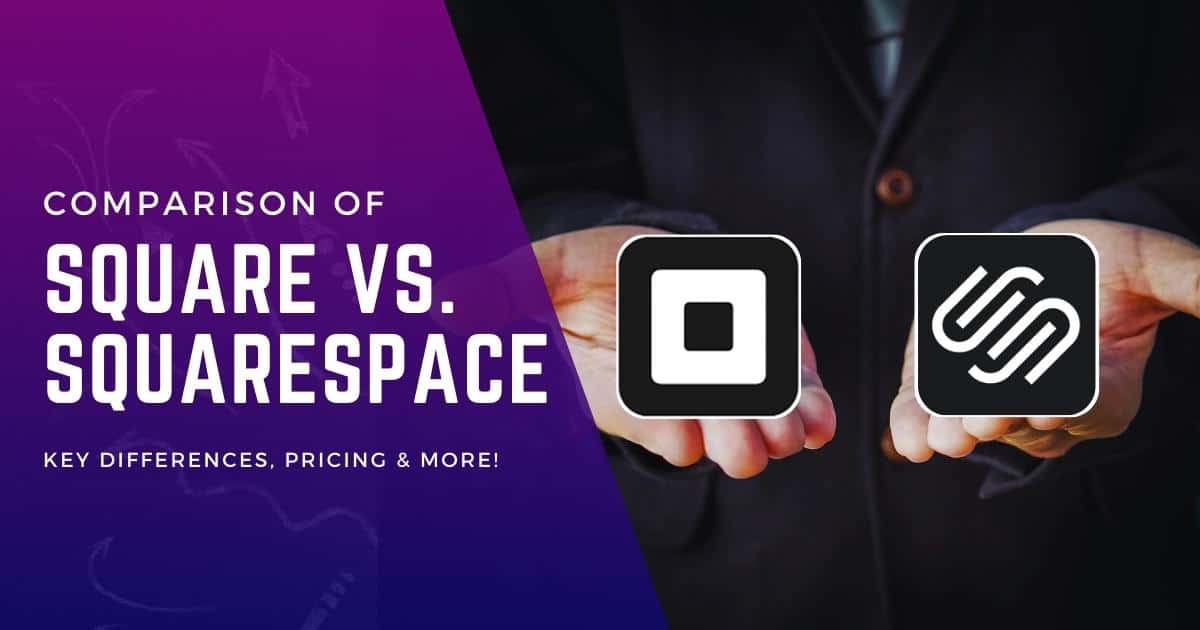Starting a business website is like flipping the sign on your storefront from “Closed” to “Open.” Only this sign is visible to the whole internet, making your business a go-to destination day and night. Think of it as your virtual handshake with potential customers, showing them who you are and what you offer.
But let’s be real—setting up a website isn’t a walk in the park. From choosing the right platform and hosting service to designing a user-friendly layout and mastering SEO, the challenges are genuine. As someone who has tackled these issues head-on and coached countless marketers and entrepreneurs through them, I can assure you—you’re in the right place for practical, proven strategies to get your site off the ground.
Why should you care? A robust business website can be your biggest asset. It helps you stand toe-to-toe with bigger players in the industry, boosts your brand image, and can even work as an automated sales machine. So hang tight; we’re about to get into the nitty-gritty of making your online business space both impactful and profitable.
Defining Goals and Target Audience

To ensure the success of your business website, it is crucial to define your goals and identify your target audience. By doing so, you can tailor your website content and design to engage with your intended customers effectively.
Identifying Specific Goals for Your Business Website
Before diving into creating a website, take the time to define the goals you want to achieve clearly. Consider what you want your website to accomplish for your business. Some common goals include generating leads, increasing sales, building brand awareness, or providing valuable information to customers.
Once you have identified your goals, developing a strategy that aligns with them becomes easier. For example, if lead generation is a priority, you may focus on implementing lead capture forms or offering incentives for visitors to provide their contact information.
Understanding Your Target Audience’s Demographics, Interests, and Needs
Knowing your target audience will greatly impact how you structure and present your website. Start by understanding their demographics, such as age range, gender, location, and occupation. This information will help you create content that resonates with them.
Consider conducting market research or utilizing analytics tools to gain insights into customer preferences and behavior. This data can reveal valuable information about their interests and needs. With this knowledge in hand, you can tailor your website’s messaging and offerings accordingly.
Tailoring Your Website Content and Design to Appeal to Your Target Audience
Once you clearly understand who your target audience is, it’s time to tailor both the content and design of your website specifically for them. Use language that speaks directly to their interests and needs while showcasing the unique value proposition of your business.
When designing the layout of your website, consider factors such as color schemes, fonts, images, and overall aesthetics that would appeal most effectively to your target audience. A visually appealing website that aligns with their preferences will make a lasting impression on visitors.
Conducting Market Research to Gain Insights into Customer Preferences and Behavior
Market research is a valuable tool that can provide you with insights into customer preferences and behavior. By understanding what your target audience wants and how they behave, you can make informed decisions about your website’s content, products, and services.
Consider conducting surveys or interviews to gather feedback directly from customers. This will help you better understand their pain points, desires, and expectations. Analyze competitor websites to identify trends and opportunities within your industry.
By leveraging market research data, you can optimize your website’s user experience by addressing common pain points and providing solutions that truly resonate with your target audience.
Choosing an Effective Design

When starting a business website, choosing an effective design is one of the most crucial aspects to consider. A visually appealing and user-friendly design plays a significant role in attracting visitors and keeping them engaged. Let’s explore some key points to remember when selecting the right design for your website.
Importance of a Visually Appealing and User-Friendly Design
A visually appealing design can make a lasting impression on your website visitors. It creates a positive first impression and helps establish credibility for your brand or business. When users land on your site, they should immediately feel drawn to its aesthetics, reflecting the essence of your brand identity.
By incorporating eye-catching color schemes, fonts, and imagery that align with your overall branding strategy, you can create a cohesive visual experience that resonates with your target audience. Try using ready-made website design templates that you can customize for your own brand.
In addition to visual appeal, it is equally important to ensure that your website offers a user-friendly experience. Visitors should be able to navigate through your website effortlessly, finding the information or products they seek without any confusion or frustration.
This is where a website builder like WordPress can be incredibly helpful. Intuitive navigation menus play a vital role in facilitating easy browsing. Organizing content into logical categories and providing clear menu item labels can enhance user experience and encourage visitors to explore further.
Selecting a Responsive Design
With the increasing use of mobile devices, choosing a responsive design for your business website is essential. A responsive design adapts well to different devices and screen sizes, ensuring your website looks great and functions properly across desktops, tablets, and smartphones. This approach eliminates the need for separate mobile versions of your site while providing an optimal viewing experience for all users.
By opting for a responsive design, you also improve search engine optimization (SEO) efforts as search engines prioritize mobile-friendly websites in their rankings. This means that having a responsive design increases your site’s visibility in search results, driving more organic traffic and potential customers to your business.
Incorporating Intuitive Navigation Menus
Intuitive navigation menus are an essential component of a user-friendly website design. They allow visitors to navigate your site easily, find the information they need, and take desired actions such as making a purchase or contacting you. When planning your website’s navigation, consider the following tips:
- Keep the menu structure simple and logical, grouping related pages together.
- Use clear and concise labels for menu items that accurately represent the content they link to.
- Avoid overwhelming visitors with too many options by limiting the number of menu items.
- Use drop-down menus for subcategories or additional features to maintain a clean and organized layout.
- Implement breadcrumb navigation to help users understand their location within your site hierarchy.
By incorporating these intuitive navigation practices, you can enhance the overall user experience on your website and make it easier for visitors to find what they’re looking for.
Using Appropriate Color Schemes, Fonts, and Imagery
Color schemes, fonts, and imagery significantly create a cohesive brand identity for your website. Consistency across these elements helps establish brand recognition and reinforces your business’s personality. Here are some tips when selecting these design elements:
- Choose colors that align with your brand’s image and evoke the desired emotions in your target audience.
- Select legible fonts and reflect the tone of your content – whether it’s professional, playful, or artistic.
- Utilize high-quality images that resonate with your target audience while maintaining fast page loading times.
Remember that simplicity is key. Avoid cluttered layouts or excessive use of flashy animations that may distract visitors from the main purpose of your site.
Step-by-Step Guide to Making a Small Business Website

To start your own business website, there are several important steps you need to follow. Let’s dive into each step and explore how to create an effective online presence for your small business.
Registering a Domain Name
To begin, it is crucial to register a domain name that reflects your business name or niche. This will serve as the address of your website on the internet. Choose a domain name that is memorable, easy to spell, and relevant to your business. For example, if you have a bakery called “Sweet Treats,” consider registering a domain like “sweettreatsbakery.com.”
Here are some key points about registering a domain name:
- Research available domain names using domain registration websites.
- Look for options that end in .com, which are widely recognized and trusted.
- Consider purchasing multiple variations of your domain name to protect your brand.
Choosing a Reliable Content Management System (CMS)
Next, you must select a reliable content management system (CMS) for building and managing your small business website. Popular CMS options include WordPress and Shopify. These platforms provide user-friendly interfaces and customizable templates that make it easy for beginners to create professional-looking websites.
Consider the following when choosing a CMS:
- Evaluate the ease of use and flexibility offered by different CMS platforms.
- Look for features such as drag-and-drop functionality and responsive design options.
- Research customer reviews and ratings to ensure reliability and customer support.
Customizing Your Website Layout
Once you’ve chosen a CMS, it’s time to customize the layout of your website. Most CMSs offer various themes or templates suitable for various industries. Select one that aligns with the look and feel you want for your small business website.
Here are some considerations when customizing your website layout:
- Explore different themes or templates provided by the CMS.
- Look for options that offer customization features like color schemes and font styles.
- Ensure that the layout is user-friendly and easy to navigate.
Adding Essential Pages
To create a comprehensive small business website, you must add essential pages that provide important information about your business. These are the basic pages I typically include:
- Home: This page serves as the main landing page for your website, providing an overview of your business and its offerings.
- About Us: Use this page to tell the story of your business, including its history, mission, and values.
- Products/Services: Showcase your products or services with detailed descriptions and images.
- Contact Us: Provide contact information such as phone number, email address, and physical address so visitors can easily get in touch.
- Terms of Service: Outlines the rules, terms, and guidelines that users must agree to to use your website or service.
- Privacy Policy: Explains how your website collects, handles, and protects users’ personal information.
Additional pages you may consider adding include staff bios, testimonials, editorial guidelines, blog posts, and an affiliate disclosure.
Optimizing Your Website
Once you have set up the basic structure of your small business website, it’s important to optimize it for search engines (SEO) and user experience (UX). This will help improve visibility in search engine results and ensure a positive browsing experience for visitors.
Consider these optimization techniques:
- Conduct keyword research to identify relevant keywords to incorporate into your website content.
- Optimize page titles, meta descriptions, headings, and image alt tags with targeted keywords.
- Ensure fast loading times by optimizing image sizes and minimizing unnecessary plugins.
By following these steps in creating a small business website, you can establish a strong online presence for your venture. Remember to regularly update your website with fresh content and monitor its performance using analytics tools to make necessary improvements.
Selecting a Web Host and Domain Name

Factors to Consider when Choosing Web Hosting Services
When starting a business website, one of the crucial decisions you need to make is selecting a reliable web hosting service. There are several factors to consider before making your choice:
Reliability: Look for a web host that guarantees high uptime, ensuring that your website remains accessible to visitors at all times. A reliable hosting provider will have robust infrastructure and backup systems to minimize downtime.
Speed: Website loading speed is essential for user experience and search engine optimization (SEO). Choose a hosting service that offers fast server response times, as slow-loading websites can deter visitors and affect your search rankings.
Security Features: Protecting your website and customer data should be a top priority. Look for a hosting provider that offers security features such as SSL certificates, firewalls, malware scanning, and regular backups.
Registering an SEO-Friendly Domain Name
Your domain name plays a significant role in establishing your online presence. When selecting a domain name for your business website, keep the following tips in mind:
Memorability: Choose a domain name that is easy to remember and spell. Avoid using complex words or hyphens that may confuse users when typing in your URL.
Relevance: Your domain name should reflect the nature of your business or the products/services you offer. It helps potential customers understand your website before even visiting it.
SEO-Friendly: Incorporate relevant keywords into your domain name to improve its visibility in search engine results. However, ensure it sounds natural and is not overly stuffed with keywords.
Comparing Different Hosting Plans based on Storage Space and Bandwidth Allowance
Hosting providers offer various plans with different storage space and bandwidth allowances. Consider these factors while comparing different hosting plans:
Storage Space: Assess how much disk space you need for your website files, images, videos, and databases. Choose a hosting plan that provides ample storage capacity to accommodate your content.
Bandwidth Allowance: Bandwidth refers to the data transferred between your website and its visitors. If you expect high traffic or plan to host large media files, opt for a hosting plan with generous bandwidth allowances.
Setting up Email Accounts associated with the Domain Name
Professional email addresses associated with your domain name add credibility to your business. Follow these steps to set up email accounts:
- Check if your hosting provider offers email services as part of their package. Many providers include email accounts in their plans.
- Create unique email addresses using your domain name (e.g., info@yourdomain.com, support@yourdomain.com).
- Configure the email settings using the provided control panel or webmail interface.
- Set up an email client on your computer or mobile device to access and manage emails efficiently.
- I suggest Google Workspace to get Gmail accounts and the full G-suite.
Setting up professional email accounts enhances communication with customers and helps build trust in your brand.
Optimizing Your Website for Search Engines

As part of your marketing strategy, you must ensure that your business website gets noticed by search engines and appears in relevant search results; optimizing your website is important. Here are some key search engine optimization strategies to consider:
Conducting Keyword Research
Conducting keyword research is one of the first steps in optimizing your website for search engines. This involves identifying the keywords and phrases people use to search for products or services similar to yours. Tools like Google Keyword Planner can help you find popular keywords with high search volumes.
Incorporating Relevant Keywords
Once you have identified the relevant keywords, it’s important to incorporate them strategically throughout your website. This includes adding them to page titles, headings, meta descriptions, and content.
Doing so increases the chances of your website appearing in search engine results when people search for those specific keywords.
Optimizing Images
Images play a crucial role in enhancing the visual appeal of your website. However, they can also impact its performance if not optimized properly. To optimize images for search engines, make sure to add alt tags with descriptive keywords.
Alt tags provide alternative text that helps search engines understand what the image is about and improves its visibility in image searches.
Building High-Quality Backlinks
Backlinks are links from other websites that direct users back to your site. They are essential in improving your website’s authority and visibility on search engine results pages (SERPs). Building high-quality backlinks from reputable websites can significantly boost your rankings on search engines like Google.
Focus on quality rather than quantity. Seek opportunities to collaborate with influencers or industry experts who can link to your website from their platforms. Guest posting on authoritative websites within your niche can also help generate valuable backlinks.
Creating Engaging and Relevant Content

You must create engaging and relevant content to make your business website stand out and attract visitors.
This involves writing compelling headlines, developing informative content that addresses customer pain points, incorporating multimedia elements for visual appeal, and regularly updating your website with fresh content.
Writing Compelling Headlines
Compelling headlines are essential to grab the attention of your website visitors. They should be catchy and concise and entice readers to click through and read further. By using powerful words or posing intriguing questions in your headlines, you can pique curiosity and compel visitors to explore more of your website’s offerings.
Some tips for writing compelling headlines include:
- Use action verbs: Start your headline with action verbs that create a sense of urgency or excitement.
- Be specific: Clearly state what value or benefit readers will gain from reading the content.
- Keep it concise: Aim for short, snappy headlines that are easy to read and understand.
- Use numbers: Incorporate numbers into your headlines as they attract attention and imply a list format.
For example:
- “10 Proven Strategies for Boosting Your Online Sales”
- “Discover the Secrets Behind Successful Social Media Marketing”
Developing Informative and Valuable Content
Your website’s content should aim to provide valuable information that addresses the pain points of your target audience. You can create content that resonates with them by understanding their needs, challenges, and desires.
Consider these steps when developing informative content:
- Research customer pain points: Identify the common problems or challenges your target audience faces regarding your products or services.
- Provide solutions: Develop content that offers practical solutions or advice to help address those pain points effectively.
- Offer expert insights: Share industry knowledge, tips, case studies, or success stories demonstrating expertise in solving customer problems.
- Focus on readability: Write clearly and concisely, using simple language that is easy to understand. Break up the text with headings, subheadings, and bullet points for better readability.
By creating informative and valuable content, you establish your website as a trusted resource for your audience, increasing their engagement and likelihood of returning.
Incorporating Multimedia Elements
In addition to well-written text, incorporating multimedia elements can enhance the visual appeal of your website and make it more engaging for visitors. Images, videos, infographics, and other visual assets help break up the text-heavy nature of web pages and provide a more interactive experience.
Here are some ways to incorporate multimedia elements effectively:
- Use high-quality images: Include relevant images that complement your content and capture visitors’ attention.
- Embed videos: Create or curate videos that provide additional information or demonstrate effective use of your products/services.
- Design infographics: Present complex information or data visually appealingly through infographics.
- Add interactive elements: Include interactive features like quizzes or calculators encouraging user participation.
By incorporating multimedia elements strategically throughout your website, you can create a visually appealing experience that keeps visitors engaged and encourages them to explore further.
Updating Your Website Regularly
Updating your website regularly with fresh content is crucial to maintain visitor interest and improve search engine rankings. This shows that your business is active and relevant while providing new information for visitors to discover.
Consider these tips for regular updates:
- Publish blog posts: Start a blog on your website where you can share industry insights, company news, product updates, or customer success stories.
- Add new products or services: If you introduce new offerings, showcase them prominently on your website.
- Feature promotions or discounts: Highlight special offers or discounts to incentivize visitors to act.
- Share news or press releases: Keep customers informed about important developments in your business through news articles or press releases.
- Update contact information: Ensure your contact details, including phone numbers, email addresses, and social media profiles, are current.
Over to You
So, we’ve covered a lot about starting a business website! We’ve discussed defining your goals and knowing who you’re talking to. Picking a good web host and domain name ensures people can find you anytime. Plus, making your site look great and easy to use is necessary. And don’t forget, SEO helps you get seen by more people.
If you’ve been following along, you’re in a strong spot to make your website shine. But remember, a website is never truly “done.” Keep an eye on how it’s doing, make updates, and stay on top of new tips and tricks. Your hard work will pay off with a website that does just what you need it to. So why wait? Start building your online presence today!
FAQs
How much does it cost to build a business website?
The cost of building a business website can vary depending on several factors such as complexity, features required, design customization, and whether you hire professionals or use DIY platforms. On average, small businesses can expect to spend anywhere from $ 1,000 to $10,000 for initial development.
Can I build my own business website without any coding knowledge?
Yes! There are numerous user-friendly platforms available today that allow you to build websites without any coding knowledge. These platforms provide pre-designed templates and drag-and-drop functionality for easy customization.
How long does it take to build a business website?
The time it takes to build a business website depends on its complexity and the resources allocated towards its development. Generally speaking, it can take anywhere from several weeks to several months to complete a business website.
Do I need to hire a professional web designer?
Hiring a professional web designer can be beneficial if you have specific design requirements or if you want to ensure a high-quality, custom website. However, creating a functional and visually appealing website using user-friendly DIY platforms is possible.
How often should I update my business website?
Regularly updating your business website is important to keep it fresh and relevant. This includes adding new content, making design enhancements, and keeping up with the latest security updates. Aim for regular updates at least once every few months.



